N-Desmethyl Clobazam

N-Desmethyl Clobazam structure
|
Common Name | N-Desmethyl Clobazam | ||
|---|---|---|---|---|
| CAS Number | 22316-55-8 | Molecular Weight | 286.71300 | |
| Density | 1.363 g/cm3 | Boiling Point | 601.8ºC at 760 mmHg | |
| Molecular Formula | C15H11ClN2O2 | Melting Point | N/A | |
| MSDS | N/A | Flash Point | 317.7ºC | |
| Symbol |


GHS02, GHS07 |
Signal Word | Danger | |
Use of N-Desmethyl ClobazamN-Desmethylclobazam is a major active metabolite of clobazam, produced primarily by the action of cytochrome P450 isoform 3A4. |
| Name | N-Desmethyl Clobazam |
|---|---|
| Synonym | More Synonyms |
| Density | 1.363 g/cm3 |
|---|---|
| Boiling Point | 601.8ºC at 760 mmHg |
| Molecular Formula | C15H11ClN2O2 |
| Molecular Weight | 286.71300 |
| Flash Point | 317.7ºC |
| Exact Mass | 286.05100 |
| PSA | 52.90000 |
| LogP | 3.49700 |
| Vapour Pressure | 1.95E-14mmHg at 25°C |
| Index of Refraction | 1.631 |
|
Section1. IDENTIFICATION OF THE SUBSTANCE/MIXTURE Product identifiers Product name: N-Desmethylclobazam Relevant identified uses of the substance or mixture and uses advised against Identified uses: Laboratory chemicals, Manufacture of substances Section2. HAZARDS IDENTIFICATION Classification of the substance or mixture Classification according to Regulation (EC) No 1272/2008 [EU-GHS/CLP] Flammable liquids (Category 2) Acute toxicity, Oral (Category 4) Acute toxicity, Inhalation (Category 4) Eye irritation (Category 2) Classification according to EU Directives 67/548/EEC or 1999/45/EC Highly flammable. Harmful by inhalation, in contact with skin and if swallowed. Irritating to eyes. Label elements Labelling according Regulation (EC) No 1272/2008 [CLP] Pictogram Signal wordDanger Hazard statement(s) H225Highly flammable liquid and vapour. H302 + H332Harmful if swallowed or if inhaled H319Causes serious eye irritation. Precautionary statement(s) P210Keep away from heat/sparks/open flames/hot surfaces. - No smoking. P305 + P351 + P338IF IN EYES: Rinse cautiously with water for several minutes. Remove contact lenses, if present and easy to do. Continue rinsing. Supplemental Hazardnone Statements According to European Directive 67/548/EEC as amended. Hazard symbol(s) R-phrase(s) R11Highly flammable. R20/21/22Harmful by inhalation, in contact with skin and if swallowed. R36Irritating to eyes. S-phrase(s) S16Keep away from sources of ignition - No smoking. S36/37Wear suitable protective clothing and gloves. Other hazards - none Section3. COMPOSITION/INFORMATION ON INGREDIENTS Mixtures ComponentClassificationConcentration Acetonitrile CAS-No.75-05-8Flam. Liq. 2; Acute Tox. 4; Eye 50 - 100 % EC-No.200-835-2Irrit. 2; H225, H302 + H312 + Index-No.608-001-00-3H332, H319 Registration number01-2119471307-38-XXXX F, Xn, R11 - R20/21/22 - R36 For the full text of the H-Statements and R-Phrases mentioned in this Section, see Section 16 Section4. FIRST AID MEASURES Description of first aid measures General advice Consult a physician. Show this safety data sheet to the doctor in attendance. If inhaled If breathed in, move person into fresh air. If not breathing, give artificial respiration. Consult a physician. In case of skin contact Wash off with soap and plenty of water. Consult a physician. In case of eye contact Rinse thoroughly with plenty of water for at least 15 minutes and consult a physician. If swallowed Do NOT induce vomiting. Never give anything by mouth to an unconscious person. Rinse mouth with water. Consult a physician. Most important symptoms and effects, both acute and delayed To the best of our knowledge, the chemical, physical, and toxicological properties have not been thoroughly investigated. Treat as cyanide poisoning., Always have on hand a cyanide first-aid kit, together with proper instructions., The onset of symptoms is generally delayed pending conversion to cyanide., Nausea, Vomiting, Diarrhoea, Headache, Dizziness, Rash, Cyanosis Indication of any immediate medical attention and special treatment needed no data available Section5. FIREFIGHTING MEASURES Extinguishing media Suitable extinguishing media Use water spray, alcohol-resistant foam, dry chemical or carbon dioxide. Special hazards arising from the substance or mixture no data available Advice for firefighters Wear self contained breathing apparatus for fire fighting if necessary. Further information Use water spray to cool unopened containers. Section6. ACCIDENTAL RELEASE MEASURES Personal precautions, protective equipment and emergency procedures Use personal protective equipment. Avoid breathing vapors, mist or gas. Ensure adequate ventilation. Remove all sources of ignition. Evacuate personnel to safe areas. Beware of vapours accumulating to form explosive concentrations. Vapours can accumulate in low areas. Environmental precautions Prevent further leakage or spillage if safe to do so. Do not let product enter drains. Methods and materials for containment and cleaning up Contain spillage, and then collect with an electrically protected vacuum cleaner or by wet-brushing and place in container for disposal according to local regulations (see section 13). Reference to other sections For disposal see section 13. Section7. HANDLING AND STORAGE Precautions for safe handling Avoid contact with skin and eyes. Avoid inhalation of vapour or mist. Keep away from sources of ignition - No smoking.Take measures to prevent the build up of electrostatic charge. Conditions for safe storage, including any incompatibilities Store in cool place. Keep container tightly closed in a dry and well-ventilated place. Containers which are opened must be carefully resealed and kept upright to prevent leakage. Recommended storage temperature: -20 °C Specific end use(s) no data available Section8. EXPOSURE CONTROLS/PERSONAL PROTECTION Control parameters Components with workplace control parameters Exposure controls Appropriate engineering controls Handle in accordance with good industrial hygiene and safety practice. Wash hands before breaks and at the end of workday. Personal protective equipment Eye/face protection Face shield and safety glasses Use equipment for eye protection tested and approved under appropriate government standards such as NIOSH (US) or EN 166(EU). Skin protection Handle with gloves. Gloves must be inspected prior to use. Use proper glove removal technique (without touching glove's outer surface) to avoid skin contact with this product. Dispose of contaminated gloves after use in accordance with applicable laws and good laboratory practices. Wash and dry hands. The selected protective gloves have to satisfy the specifications of EU Directive 89/686/EEC and the standard EN 374 derived from it. Body Protection Complete suit protecting against chemicals, Flame retardant antistatic protective clothing, The type of protective equipment must be selected according to the concentration and amount of the dangerous substance at the specific workplace. Respiratory protection Where risk assessment shows air-purifying respirators are appropriate use a full-face respirator with multi-purpose combination (US) or type ABEK (EN 14387) respirator cartridges as a backup to engineering controls. If the respirator is the sole means of protection, use a full-face supplied air respirator. Use respirators and components tested and approved under appropriate government standards such as NIOSH (US) or CEN (EU). Section9. PHYSICAL AND CHEMICAL PROPERTIES Information on basic physical and chemical properties a) AppearanceForm: liquid b) Odourno data available c) Odour Thresholdno data available d) pHno data available e) Melting point/freezingno data available point f) Initial boiling point and 81 - 82 °C at 1,013 hPa81 - 82 °C at 1,013 hPa boiling range g) Flash point2 °C - closed cup2 °C - closed cup h) Evaporation rateno data available i) Flammability (solid, gas) no data available j) Upper/lowerUpper explosion limit: 16 %(V) flammability or16 %(V) explosive limitsLower explosion limit: 4,4 %(V)4,4 %(V) k) Vapour pressureno data available l) Vapour densityno data available m) Relative density0,782 g/cm3 at 20 °C0,782 g/cm3 at 20 °C n) Water solubilityno data available o) Partition coefficient: n- no data available octanol/water p) Auto-ignitionno data available temperature q) Decompositionno data available temperature r) Viscosityno data available s) Explosive propertiesno data available t) Oxidizing propertiesno data available Other safety information no data available Section10. STABILITY AND REACTIVITY Reactivity no data available Chemical stability no data available Possibility of hazardous reactions no data available Conditions to avoid Heat, flames and sparks. Extremes of temperature and direct sunlight. Incompatible materials acids, Bases, Oxidizing agents, Alkali metals Hazardous decomposition products Other decomposition products - no data available Section11. TOXICOLOGICAL INFORMATION Information on toxicological effects Acute toxicity no data available Skin corrosion/irritation no data available Serious eye damage/eye irritation no data available Respiratory or skin sensitization no data available Germ cell mutagenicity no data available Carcinogenicity IARC:No component of this product present at levels greater than or equal to 0.1% is identified as probable, possible or confirmed human carcinogen by IARC. Reproductive toxicity no data available Specific target organ toxicity - single exposure no data available Specific target organ toxicity - repeated exposure no data available Aspiration hazard no data available Potential health effects InhalationHarmful if inhaled. May cause respiratory tract irritation. IngestionHarmful if swallowed. SkinMay be harmful if absorbed through skin. May cause skin irritation. EyesCauses serious eye irritation. Signs and Symptoms of Exposure To the best of our knowledge, the chemical, physical, and toxicological properties have not been thoroughly investigated. Treat as cyanide poisoning., Always have on hand a cyanide first-aid kit, together with proper instructions., The onset of symptoms is generally delayed pending conversion to cyanide., Nausea, Vomiting, Diarrhoea, Headache, Dizziness, Rash, Cyanosis Additional Information RTECS: Not available Section12. ECOLOGICAL INFORMATION Toxicity no data available Persistence and degradability no data available Bioaccumulative potential no data available Mobility in soil no data available Results of PBT and vPvB assessment no data available Other adverse effects no data available Section13. DISPOSAL CONSIDERATIONS Waste treatment methods Product Burn in a chemical incinerator equipped with an afterburner and scrubber but exert extra care in igniting as this material is highly flammable. Offer surplus and non-recyclable solutions to a licensed disposal company. Contaminated packaging Dispose of as unused product. Section14. TRANSPORT INFORMATION UN number ADR/RID: 1648IMDG: 1648IATA: 1648 UN proper shipping name ADR/RID: ACETONITRILE, SOLUTION IMDG: ACETONITRILE, SOLUTION IATA:Acetonitrile, SOLUTION Transport hazard class(es) ADR/RID: 3IMDG: 3IATA: 3 Packaging group ADR/RID: IIIMDG: IIIATA: II Environmental hazards ADR/RID: noIMDG Marine Pollutant: noIATA: no Special precautions for user no data available SECTION 15 - REGULATORY INFORMATION N/A SECTION 16 - ADDITIONAL INFORMATION N/A |
CHEMICAL IDENTIFICATION
HEALTH HAZARD DATAACUTE TOXICITY DATA
|
| Symbol |


GHS02, GHS07 |
|---|---|
| Signal Word | Danger |
| Hazard Statements | H225-H302 + H312 + H332-H319 |
| Precautionary Statements | P210-P261-P302 + P352 + P312-P304 + P340 + P312-P337 + P313-P403 + P235 |
| RIDADR | UN 1648 3 / PGII |
| HS Code | 2933990090 |
|
~% 
N-Desmethyl Clobazam CAS#:22316-55-8 |
| Literature: BOEHRINGER INGELHEIM INTERNATIONAL GMBH; SIMONEAU, Bruno; DEROY, Patrick; FADER, Lee; FAUCHER, Anne-Marie; GAGNON, Alexandre; GRAND-MAITRE, Chantal; KAWAI, Steven; LANDRY, Serge; MERCIER, Jean-Francois; RANCOURT, Jean Patent: WO2011/100838 A1, 2011 ; Location in patent: Page/Page column 26 ; |
|
~% 
N-Desmethyl Clobazam CAS#:22316-55-8 |
| Literature: Poupaert, Jacques H.; Guiot, Pierre; Jacqmin, Philippe; Dumont, Pierre European Journal of Medicinal Chemistry, 1988 , vol. 23, p. 417 - 420 |
|
~% 
N-Desmethyl Clobazam CAS#:22316-55-8 |
| Literature: Fader, Lee D.; Bethell, Richard; Bonneau, Pierre; Boes, Michael; Bousquet, Yves; Cordingley, Michael G.; Coulombe, Rene; Deroy, Patrick; Faucher, Anne-Marie; Gagnon, Alexandre; Goudreau, Nathalie; Grand-Maitre, Chantal; Guse, Ingrid; Hucke, Oliver; Kawai, Stephen H.; Lacoste, Jean-Eric; Landry, Serge; Lemke, Christopher T.; Malenfant, Eric; Mason, Stephen; Morin, Sebastien; O'Meara, Jeff; Simoneau, Bruno; Titolo, Steve; Yoakim, Christiane Bioorganic and Medicinal Chemistry Letters, 2011 , vol. 21, # 1 p. 398 - 404 |
|
~% 
N-Desmethyl Clobazam CAS#:22316-55-8 |
| Literature: Fader, Lee D.; Bethell, Richard; Bonneau, Pierre; Boes, Michael; Bousquet, Yves; Cordingley, Michael G.; Coulombe, Rene; Deroy, Patrick; Faucher, Anne-Marie; Gagnon, Alexandre; Goudreau, Nathalie; Grand-Maitre, Chantal; Guse, Ingrid; Hucke, Oliver; Kawai, Stephen H.; Lacoste, Jean-Eric; Landry, Serge; Lemke, Christopher T.; Malenfant, Eric; Mason, Stephen; Morin, Sebastien; O'Meara, Jeff; Simoneau, Bruno; Titolo, Steve; Yoakim, Christiane Bioorganic and Medicinal Chemistry Letters, 2011 , vol. 21, # 1 p. 398 - 404 |
|
~% 
N-Desmethyl Clobazam CAS#:22316-55-8 |
| Literature: BOEHRINGER INGELHEIM INTERNATIONAL GMBH; SIMONEAU, Bruno; DEROY, Patrick; FADER, Lee; FAUCHER, Anne-Marie; GAGNON, Alexandre; GRAND-MAITRE, Chantal; KAWAI, Steven; LANDRY, Serge; MERCIER, Jean-Francois; RANCOURT, Jean Patent: WO2011/100838 A1, 2011 ; |
|
~% 
N-Desmethyl Clobazam CAS#:22316-55-8 |
| Literature: BOEHRINGER INGELHEIM INTERNATIONAL GMBH; SIMONEAU, Bruno; DEROY, Patrick; FADER, Lee; FAUCHER, Anne-Marie; GAGNON, Alexandre; GRAND-MAITRE, Chantal; KAWAI, Steven; LANDRY, Serge; MERCIER, Jean-Francois; RANCOURT, Jean Patent: WO2011/100838 A1, 2011 ; |
|
~% 
N-Desmethyl Clobazam CAS#:22316-55-8 |
| Literature: Poupaert, Jacques H.; Guiot, Pierre; Jacqmin, Philippe; Dumont, Pierre European Journal of Medicinal Chemistry, 1988 , vol. 23, p. 417 - 420 |
| Precursor 7 | |
|---|---|
| DownStream 7 | |
| HS Code | 2933990090 |
|---|---|
| Summary | 2933990090. heterocyclic compounds with nitrogen hetero-atom(s) only. VAT:17.0%. Tax rebate rate:13.0%. . MFN tariff:6.5%. General tariff:20.0% |
|
Blood concentrations of clobazam and norclobazam in a lethal case involving clobazam, meprobamate and clorazepate.
Leg. Med. (Tokyo.) 12(6) , 300-4, (2010) Clobazam is a benzodiazepine with anti-anxiety and anticonvulsant properties marketed in several countries. Norclobazam, a metabolite of clobazam, has similar pharmacological activity but weaker sedat... |
|
|
Simultaneous determination of clobazam and its major metabolite in human plasma by a rapid HPLC method.
J. Chromatogr. B. Analyt. Technol. Biomed. Life Sci. 823(2) , 167-71, (2005) A rapid and specific HPLC method has been developed and validated for simultaneous determination of clobazam, the anticonvulsant agent, and its major metabolite in human plasma. The sample preparation... |
|
|
A major influence of CYP2C19 genotype on the steady-state concentration of N-desmethylclobazam.
Brain Dev. 26(8) , 530-4, (2004) N-desmethylclobazam (N-CLB), the major metabolite of clobazam (CLB), exerts a large influence on therapeutic and adverse effects of CLB. A substantial inter-individual variability has been observed in... |
| N-Desmethylclobazam |
| 7-Chloro-5-phenyl-1,5-dihydro-3H-1,5-benzodiazepine-2,4-dione N-Desmethylclobazam |
| 7-chloro-5-phenyl-1H-1,5-benzodiazepine-2,4-dione |
| Clobazam impurity A |
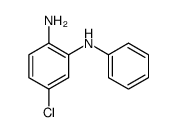
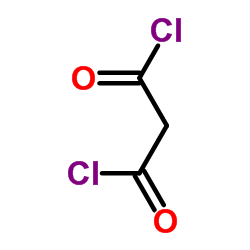
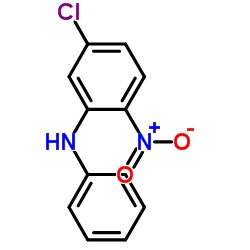
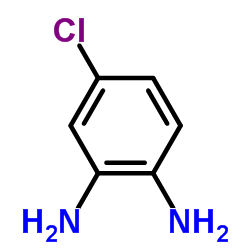
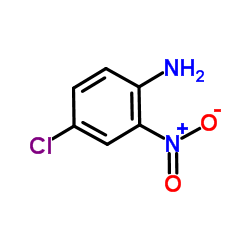


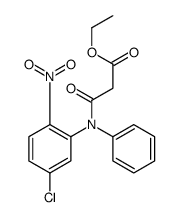
 CAS#:22316-47-8
CAS#:22316-47-8![8-chloro-1-methyl-5-methylsulfanyl-6-phenyl-[1,2,4]triazolo[4,3-a][1,5]benzodiazepine structure](https://image.chemsrc.com/caspic/424/153901-45-2.png) CAS#:153901-45-2
CAS#:153901-45-2![8-chloro-5-methylsulfanyl-6-phenyl-[1,2,4]triazolo[4,3-a][1,5]benzodiazepine structure](https://image.chemsrc.com/caspic/462/153901-44-1.png) CAS#:153901-44-1
CAS#:153901-44-1![8-chloro-5-methylsulfanyl-1,6-diphenyl-[1,2,4]triazolo[4,3-a][1,5]benzodiazepine structure](https://image.chemsrc.com/caspic/386/153901-46-3.png) CAS#:153901-46-3
CAS#:153901-46-3![8-chloro-1-methyl-5-(4-methylpiperazin-1-yl)-6-phenyl-[1,2,4]triazolo[4,3-a][1,5]benzodiazepine structure](https://image.chemsrc.com/caspic/179/153901-56-5.png) CAS#:153901-56-5
CAS#:153901-56-5![2-[(8-chloro-1-methyl-6-phenyl-[1,2,4]triazolo[4,3-a][1,5]benzodiazepin-5-yl)sulfanyl]-N,N-dimethylethanamine structure](https://image.chemsrc.com/caspic/310/153901-48-5.png) CAS#:153901-48-5
CAS#:153901-48-5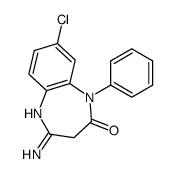 CAS#:36985-33-8
CAS#:36985-33-8